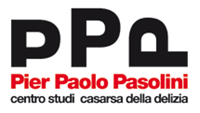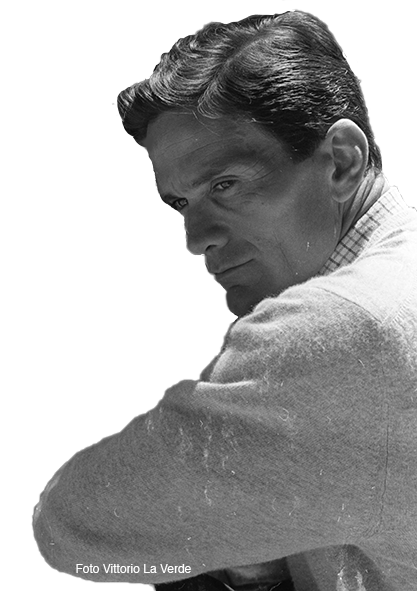[blockquote author=”P.P. Pasolini, I parlanti, «Botteghe oscure», 1951, ora in Romanzi e racconti, Milano, 1998, vol. II, p. 182″ link=”” target=”_blank”]Al di là della stazione, percorso il lungo e squallido viale dal linguaggio franco che unisce i due paesi, si entra in San Giovanni. Che allegrezza, se non sempre espressa, certo sempre sospesa nell’aria di San Giovanni! Che possibilità continua di incontri fortunati con compagnie propense ai più caldi cameratismi! Ci sono certe sere d’estate in cui, dopo aver attraversato tre o quattro paesi in bicicletta, accade di passare per San Giovanni e di sentirvi in tutta la sua serena estensione di luci, di canti a mezza voce, di rumori perduti nelle loro vibratili risonanze dentro un’atmosfera di polvere, di rugiada, il genio dell’estate paesana.[/blockquote]
The square of San Giovanni gathers together two roads: one road leads to Borgo Runcis and the other one leads to San Vito. These are the real sceneries of the events narrated in Romans (a short incomplete friulian novel) and in Il sogno di una cosa (the third narrative experiment, composed between 1948 and 1950 and printed in 1962). In those years and in those places, two more novels set in Friuli found their realization: Atti Impuri and Amado mio, written between 1948 and 1950 and published in 1982.Pasolini’s first composition in prose, from which derive Atti Impuri e Amado mio, presents a diary structure. The famous pages of Quaderni Rossi, (Red notebooks) written between the summer of 1946 and the autumn of 1946, are a clear demonstration of this; there is the alternation between his diary and the memories of his youth. Quaderni Rossi was born from the rapidity of the thoughts and spontaneity of the speech interchanged with white spaces looking forward to the adequate expression.The first two novels consist on a sort of re-elaborated version of these notebooks in a first person narration structure to which corresponds also the protagonist of the novel.



